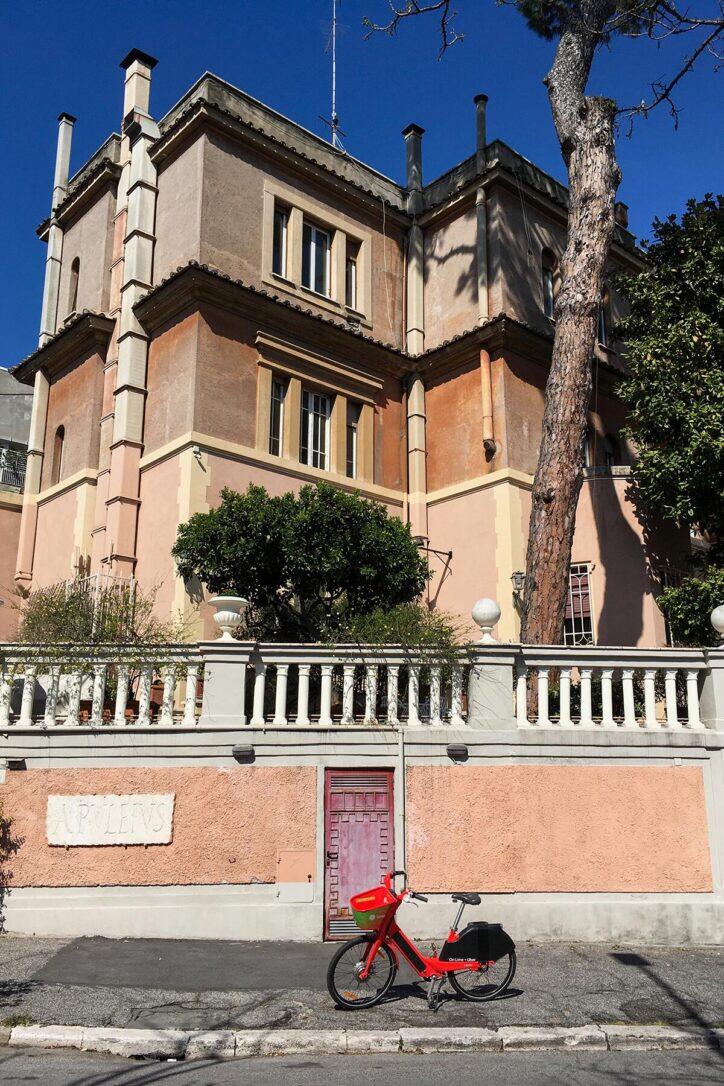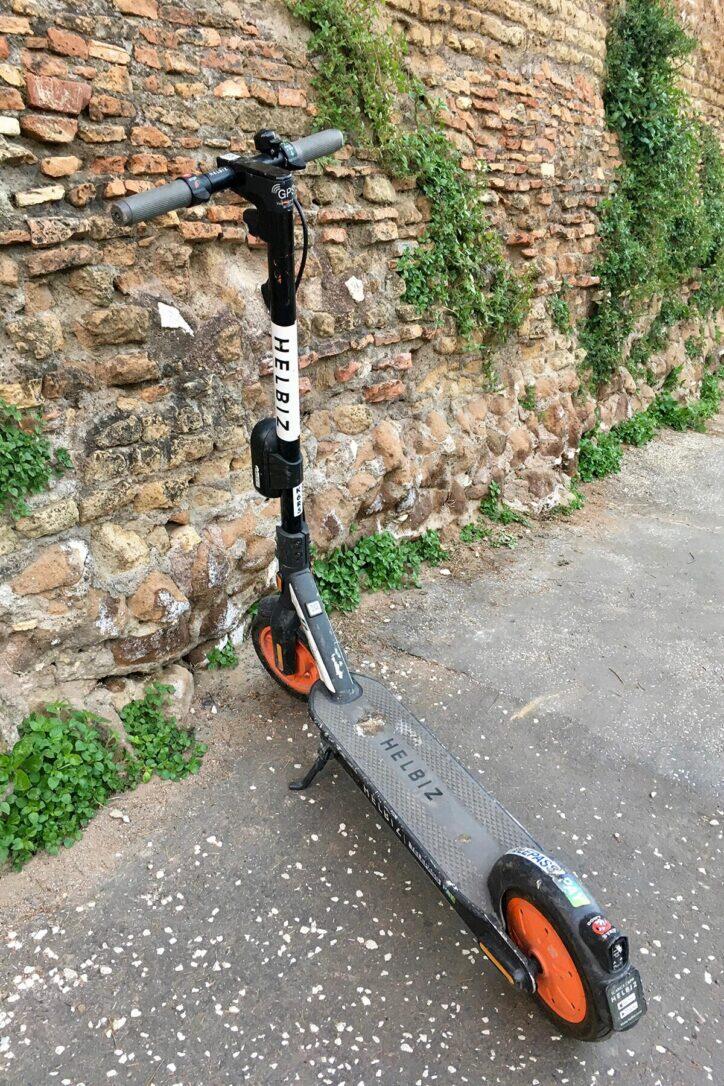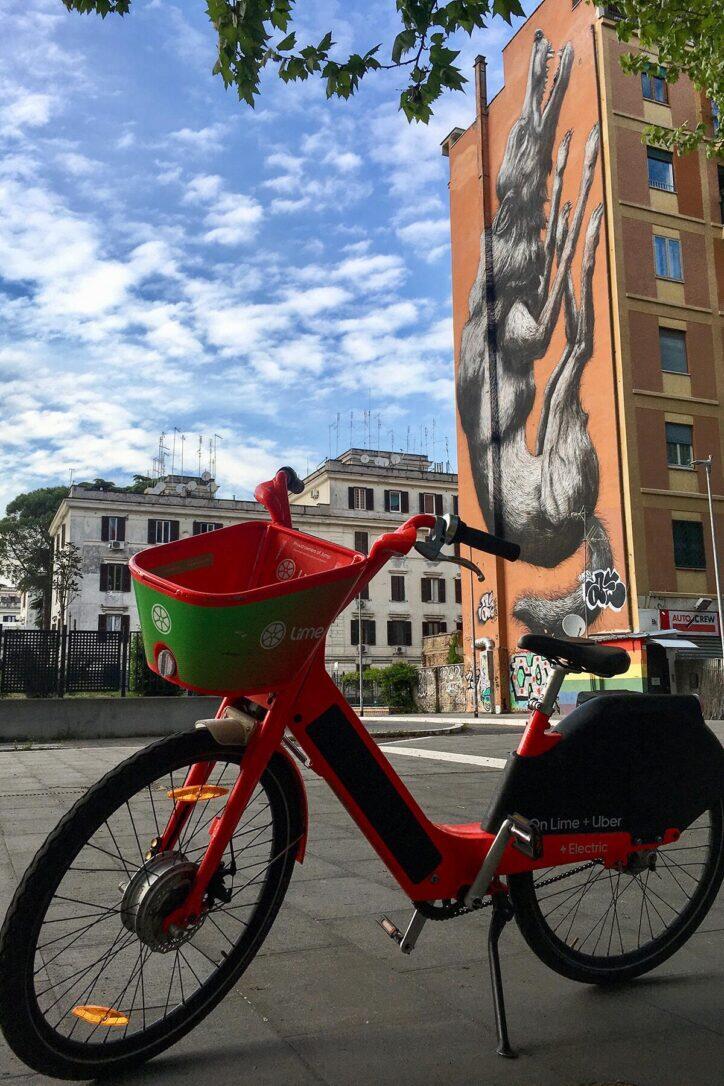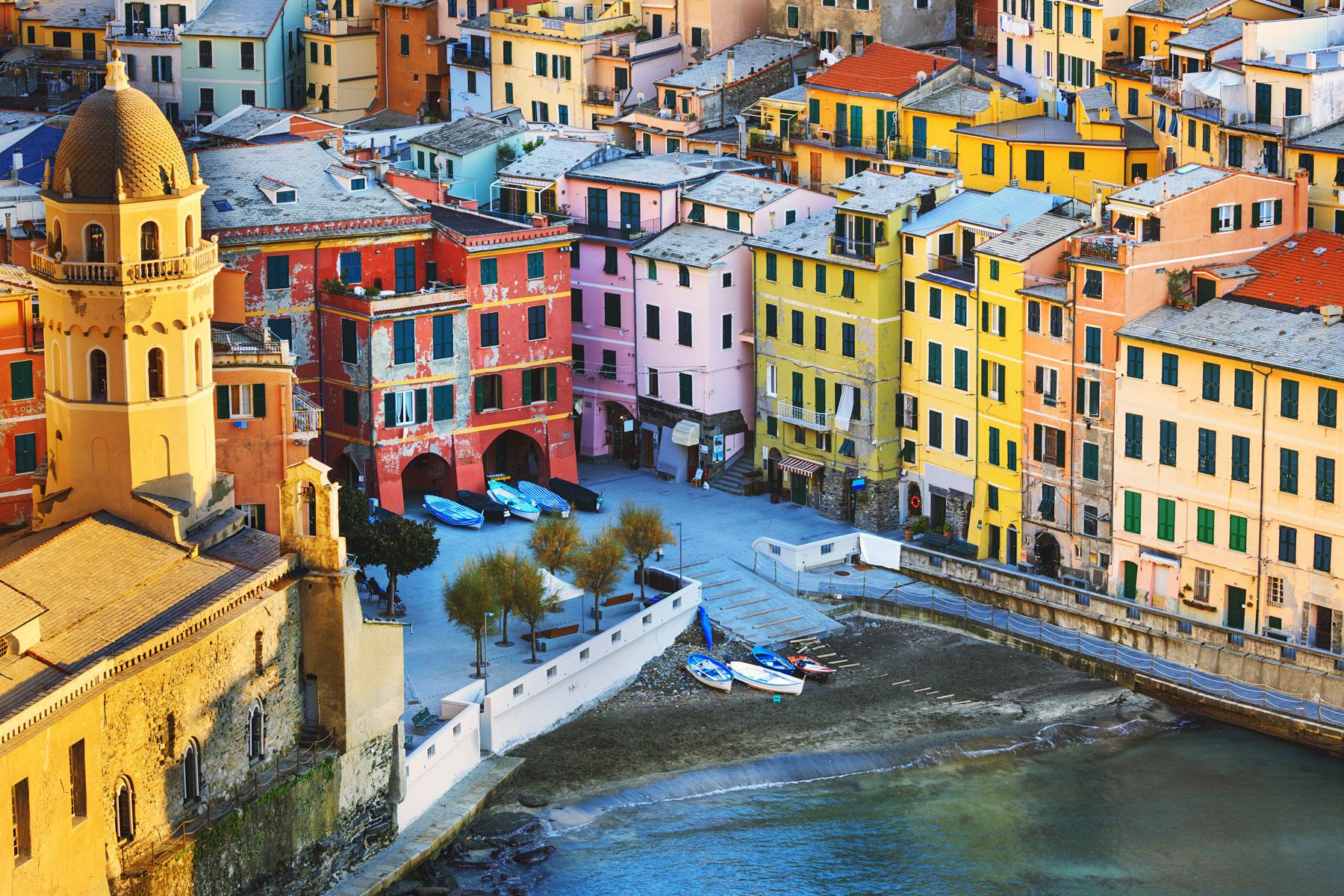The Eternal City is making a shift to zippier, greener, mobility options, but just how safe are they?
I wasn’t out of breath as I pedaled, thanks to the electric motor that whirred softly, propelling me past the rose garden on the right and the Circus Maximus on the left. The cinnamon-colored stacks of the Palatine Hill glowed in the waning sunlight.
It was May of 2020, and it was Rome’s first Saturday out of lockdown. I was outside just for the hell of it, having a blast as I zipped around the city on my modern-day chariot: a glossy Uber e-bike.

The e-bikes came to town in late 2019, mere months before the COVID-19 pandemic hit. Between the waves of lockdown, fleets of stand-up electric scooters arrived. Now, there are clusters of multicolored micro-mobility options on every street corner.
After my initial gleeful loop around the city, I had another not-so-gleeful ride on an Uber e-bike a few weeks later. It involved a bus coming extremely close on one side and some crater-sized potholes on the other. My nerves (and tailbone) took a few days to recover.
I also had a harrowing experience on one of the e-scooters when a car pulled out of an intersection in front of me and my fingers slipped off the hand brake, sending me lurching forward towards the car and its bewildered driver. Both of these instances made me want to launch the scooter into the sun and never ride one again.
Recommended Fodor’s Video
Based on these anecdotes, you might be wondering if electric micro-mobility in Rome is a good thing or a bad thing. On one hand, the historic center is commonly referred to as an “open-air museum,” making sightseeing from the back of an e-bike or e-scooter ideal. On the other, the roads are full of patchy pavement, loose cobblestones, wild traffic, and cars parked as if drivers are playing a city-wide game of Tetris.
So, are these new transportation options even compatible with an ancient city? Is it safe to use sharing options amid a global pandemic? And just how sustainable is electric micro-mobility, anyway?
Before you hop off the plane and onto an e-bike or e-scooter, let’s find out.
First off, why Rome?
Before COVID-19 started spreading through Italy, the Uber e-bikes (which were acquired by Lime in May 2020) were introduced as a way to reduce traffic and make the city more sustainable.
Haya Verwoord Douidri, the Vice President of the European, Middle Eastern, and African divisions for Superpedestrian, operators of LINK e-scooters, see Rome as a city that’s ripe for electric micro-mobility. “There’s a lot of congestion from motor vehicles, with millions of people trying to travel through narrow streets. This creates a real need for active transport modes (such as bicycles) and on-demand, low-carbon micro-mobility (such as shared e-bikes and shared e-scooters),” she said in a written comment.
The pandemic also contributed to the “huge boom” in micro-mobility options in Rome, according to Marialisa Nigro, Associate Professor of Transportation Engineering at Roma Tre University. “From the moment the lockdown began, public transport was considered dangerous by some passengers during a public health crisis because of the crowding and travel conditions, so cities started looking for alternative mobility options,” Nigro explains. This led to more and more micro-mobility companies setting up shop in the city.
How safe is shared micro-mobility vehicles during COVID-19?
According to Ms. Douidri, the micro-mobility industry increased its sanitation measures “across the board” during the pandemic. Some companies report disinfecting their vehicles twice a day. Lime also recommends wiping down the vehicle before riding, wearing gloves while aboard, and washing or sanitizing your hands after the ride.

How safe are e-bikes and e-scooters on Roman roads?
For Professor Nigro, there are multiple issues to consider when discussing electric micro-mobility and safety, but first and foremost is infrastructure.
City officials seem to agree with her. Before 2020, Rome didn’t have much in the way of dedicated bike tracks, but in the spring of last year, the city passed measures to lay down 150km of new ones. A recent announcement by Pietro Calabrese, the Deputy Mayor and City Counselor in charge of Urban Transport bumped that number up to 500. Thanks to this new initiative, bike paths are popping up all over the city.
A larger plan for sustainable mobility in Rome has also been in the works for years, as has the GRAB, or Grande Raccordo Annulare Delle Bici, a ring road made up of paths for micro-mobility vehicles that would encircle the city.
What are the rules for riding e-bikes and e-scooters?
In Rome, riders must be 14 or older (although some companies require them to be 18). Helmets are recommended for everyone, but they’re only required for children aged 14 to 18, and you don’t need a license.
If these laws seem lacking, that’s because they are. Luckily, there’s a draft bill on the table that addresses insurance requirements, mandates the wearing of helmets and reflector vests, and sets stricter speed and age limits.
Because the situation is evolving, check the safety information available in each company’s app or on their website to be sure that you’re in compliance with local laws before you ride.
How sustainable are e-bikes and e-scooters?
According to Professor Nigro, at the local level, using electric micro-mobility over cars reduces greenhouse gas emissions in cities, which is, of course, a good thing.
“But,” she said, “in order to effectively calculate the impact at the level of emissions, we have to consider the vehicles from ‘well-to-wheel.’” This means taking environmental impact into account throughout the vehicles’ entire lifecycle, from production to disposal. Nigro also added that in order to be truly “green,” the energy source used to recharge the batteries in e-bikes and e-scooters must be sustainable.
So, what’s the most environmentally friendly way to get around Rome? Public transport. “It is considered to be the most sustainable option because it concentrates more people in a smaller space, so there’s less consumption [of resources],” said Professor Nigro.

What’s the future of electric micro-mobility in Rome?
For Bruno Monardo, Researcher and Associate Professor in Urban and Regional Planning at Rome’s La Sapienza University, urban planning is about enriching the quality of life of city dwellers, whether they live in the historic center or outskirts. He sees the shift towards micro-mobility as an opportunity to not only provide a safer and more sustainable way to get around cities but as a means of beautifying them. Monardo sees the potential for bike paths to be turned into extensive networks that link public transportation hubs, punctuated by green spaces and gardens.
Now that’s a city that I’d like to see.
After experiencing the good, the bad, and the bumpy with the e-bikes and e-scooters, I’m happy to report that I now ride them regularly, thanks to the new bike paths and the fact that I’m more comfortable riding in Roman traffic.
The COVID-19 pandemic brought about huge changes in terms of safe and sustainable mobility in Rome. The shift to a 100% micro-mobility-friendly city won’t happen overnight, but I think we can all agree that we’re on the right (bike) track.






As the humans developed themselves they have modified their vehicles according to the new energy resources we cannot remain dependent on the cruide oil which is a main cause for the global warming therefore the only option is left for us is to operate our vehicle by renewable energy.